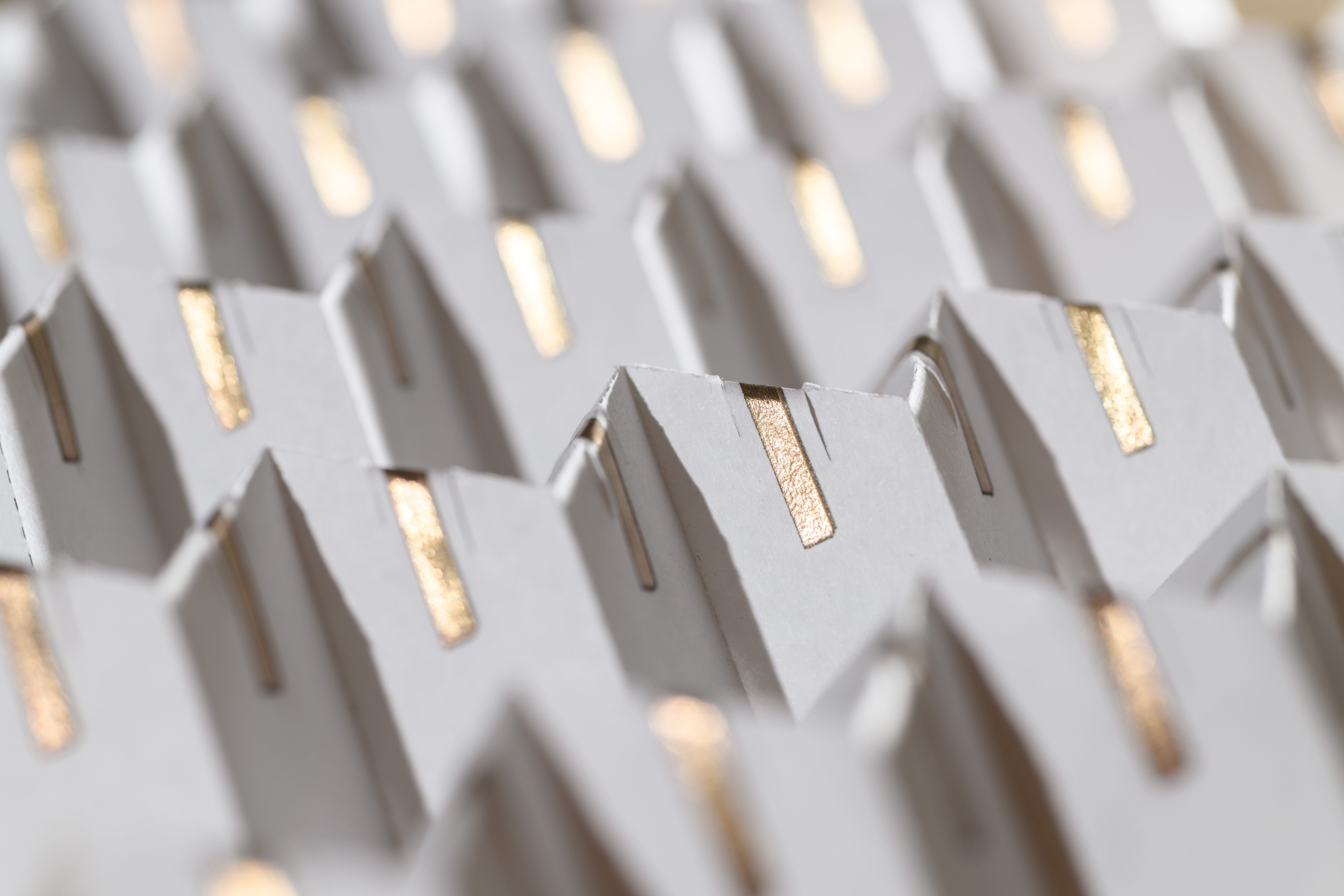The origami method known as Miura-Ori creates a pattern that folds in and out like an accordion. From folding paper to technological designs, Georgia Institute of Technology researchers have developed an origami-inspired structure to create radio frequency (RF) filters with a special ability. They have adjustable dimensions that enable “the devices to change which signals they block throughout a large range of frequencies,” according to Georgia Tech.
“The Miura-Ori pattern has an infinite number of possible positions along its range of extension from fully compressed to fully expanded,” says Glaucio Paulino, the Raymond Allen Jones chair of Engineering and a professor in the Georgia Tech School of Civil and Environmental Engineering. “A spatial filter made in this fashion can achieve similar versatility, changing which frequency it blocks as the filter is compressed or expanded.”
For testing, the team utilized a specific printer that scored pieces of paper, meaning the sheets were creased so they could be folded neatly in the origami pattern. Silver ink was then added to those lines, which created a dipole element, thus bestowing its RF filtering capabilities.
“The dipoles were placed along the fold lines so that when the origami was compressed, the dipoles bend and become closer together, which causes their resonant frequency to shift higher along the spectrum,” says Manos Tentzeris, the Ken Byers professor in Flexible Electronics in the Georgia Tech School of Electrical and Computer Engineering.
The team had to prevent the dipole element from breaking along the creased line. According to Georgia Tech, this was resolved by suspending the perforations “at the location of each silver element and then continued on the other side. Additionally, along each of the dipoles, a separate cut was made to form a ‘bridge’ that allowed the silver to bend more gradually.”
In the end, a single layer of the filter inspired by Miura-Ori origami blocked a narrow range of frequencies, while a wider band of blocked frequencies was achieved with multiple layers.

(Image Source: Rob Felt)
RF filters created with this new approach could prove useful in a variety of cases, including “antenna systems capable of adapting in real time to ambient conditions to the next generation of electromagnetic cloaking systems that could be reconfigured on the fly to reflect or absorb different frequencies,” according to Georgia Tech.
Due to their folding ability, the structures may also help with antenna systems that need to be stored in tight, compact spaces before deployment—a specification required in many space-bound applications.
“A device based on Miura-Ori could both deploy and be re-tuned to a broad range of frequencies as compared to traditional frequency selective surfaces, which typically use electronic components to adjust the frequency rather than a physical change,” says Georgia Tech graduate student Abdullah Nauroze, who worked on the project. “Such devices could be good candidates to be used as reflectarrays for the next generation of cubesats or other space communications devices.”
The study was supported by the National Science Foundation, U.S. Department of Defense, and Semiconductor Research Corporation. The results, published December 10, can be found in the journal National Academy of Science.




